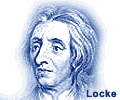How and Why Should We Measure and Compare State Capacity of Different Countries? An Experiment with Empirical Research
Akhremenko A.S.,
Professor of Faculty of Social Sciences, Programme Academic Supervisor of Master’s Programme “Applied Politics”, National Research University Higher School of Economics,, aakhremenko@hse.ru
elibrary_id: 124097 | ORCID: 0000-0001-8002-7307 | RESEARCHER_ID: L-3000-2015
Gorelskiy I.E.,
MA student of Master’s Programme “Applied Politics” of Faculty of Social Sciences, National Research University Higher School of Economics, iegorelskiy@edu.hse.ru
ORCID: 0000-0001-8489-0562 | RESEARCHER_ID: V-3961-2018Melville A.Yu.,
Professor, Dean of Faculty of Social Sciences, National Research University Higher School of Economics, amelville@hse.ru
elibrary_id: 251142 | ORCID: 0000-0002-1414-5783 | RESEARCHER_ID: B-1152-2014
DOI: 10.17976/jpps/2019.03.04
Akhremenko A.S., Gorelskiy I.E., Melville A.Yu. How and Why Should We Measure and Compare State Capacity of Different Countries? An Experiment with Empirical Research. – Polis. Political Studies. 2019. No. 3. P. 49-68. (In Russ.). https://doi.org/10.17976/jpps/2019.03.04
The study was carried out by a grant from the Russian Science Foundation (project No. 17-18-01651) in the National Research University Higher School of Economics.
Based on the theoretical and methodological foundations of state capacity proposed and substantiated in the previous article of this journal (No. 2-2019) and the corresponding set of indicators for studying the multidimensional nature of this concept (level of military expenditures and aggregated indicator of control over violence, government and tax revenues, as well as the institutional quality and the level of the legal economy), in this article the authors focus on empirical perspectives of measuring state capacity. They rely on the use of multidimensional statistical methods (hierarchical clustering) and critically analyze the shortcomings of other approaches (dimensionality reduction, aggregation, rating) in relation to the array of collected data. The researchers' contribution to the scientific discussion is one of the first attempts at alternative empirical testing of the state capacity index and the selection of eight stable structures typical for certain groups of countries, obtained as a result of the repeated application of the clustering procedure with the corresponding parameters (clusters “Successful development”, “Second echelon”, “Individual trajectories”, “The oil and gas needle”, “Outsiders”, “On the verge of failure”, “Rising Asian giants” and “Variations of the post-Soviet trajectories”). In conclusion, the authors emphasize that, despite the conventionality of the resulting clusters (due to the specificity of the method used, which allows the scales of such structures to be “tuned”), in general, they reveal typologically similar variants of state development, taking into account the specificity of historical circumstances, internal and external conditions, and strategic decisions made by national elites.
References
Fox J-P. 2010. Bayesian Item Response Modeling: Theory and Applications. New York: Springer-Verlag New York. 313 p. https://doi.org/10.1007/978-1-4419-0742-4
Ghahramani Z., Griffiths T.L., Sollich P. 2007. Bayesian Nonparametric Latent Feature Models. – Bayesian Statistics 8. Ed. by J.M. Bernardo, M.J. Bayarri, J.O. Berger, A.P. Dawid, D. Heckerman, A.F.M. Smith, M. West. Oxford: Oxford University Press. P. 1-25.
Granberg D., Brown T.A. 1992. The Perception of Ideological Distance. – Political Research Quarterly. Vol. 45. No. 3. P. 727-750. https://doi.org/10.1177/106591299204500309
Handbook of Cluster Analysis. 2015. Ed. by Hennig C., Meila M., Murtagh F., Rocci R. Boca Raton, London, New York: CRS Press. 753 p.
Hanson J.K., Sigman R. 2013. Leviathan’s Latent Dimensions: Measuring State Capacity for Comparative Political Research. – APSA 2011 Annual Meeting. 28 p.
Lopes H.F., West M. 2004. Bayesian Model Assessment in Factor Analysis. – Statistica Sinica. Vol. 14. No. 1. P. 41-67. URL: https://www2.stat.duke.edu/~km68/materials/Lopez_West04-Bayes_Model_ Assessment_factor.pdf (accessed 12.03.2019).
Pemstein D., Meserve S., Melton J. 2010. Democratic Compromise: A Latent Variable Analysis of Ten Measures of Regime Type. – Political Analysis. Vol. 18. No. 4. P. 426-449. https://doi.org/10.1093/pan/mpq020
Steinley D. 2015. K-Medoids and Other Criteria for Crisp Clustering. – Handbook of Cluster Analysis. Ed. by Hennig C., Meila M., Murtagh F., Rocci R. Boca Raton, London, New York: CRS Press. P. 55-66.
Akhremenko A.S. 2008. Kolichestvennyi analiz rezul’tatov vyborov: sovremennye metody i problemy [Quantitative Analysis of Election Results: Modern Methods and Problems]. Moscow: Moscow University Press. 159 p. (In Russ.)
Akhremenko A.S. 2018. Politicheskii analiz i prognozirovanie v 2 ch. Chast’ 2: uchebnik i praktikum dlya bakalavriata i magistratury [Political Analysis and Forecasting at two parts. Part 2: Textbook and Practical Work for Undergraduate and Graduate Programs]. Moscow: Urait Publishing House. 221 p. (In Russ.)
Akhremenko A.S., Gorelskiy I.E., Melville A.Yu. 2019. How and Why Should We Measure and Compare State Capacity of Different Countries? Theoretical and Methodological Foundations. – Polis. Political Studies. No. 2. P. 8-23. (In Russ.) https://doi.org/10.17976/jpps/2019.02.02
Dubrov A.M., Mkhitaryan V.S., Troshin L.I. 2003. Mnogomernye statisticheskie metody: uchebnik [Multidimensional Statistical Methods: the Textbook]. Moscow: Finansy i statistika Publishers. 352 p. (In Russ.)
Melville A.Yu. 2018. Power and Influence of Modern State withing the Changing World Order: Some Theoretical and Methodological Aspects. – Political Science (RU). No. 1. P. 173-200. (In Russ.)
See also:
Akhremenko A.S., Gorelskiy I.E., Melville A.Yu.,
How and Why Should We Measure and Compare State Capacity of Different Countries? Theoretical and Methodological Foundations. – Polis. Political Studies. 2019. No2
Nisnevich Yu.A., Rozhich P.,
Lustration as instrument of counteracting corruption. – Polis. Political Studies. 2014. No1
Teterin A.Ye.,
Application of qualitative methods in political-science research (with N.Fairclough’s critical discourse-analysis as example). – Polis. Political Studies. 2011. No5
Gallarotti G.M.,
How to Measure Soft Power in International Relations. – Polis. Political Studies. 2020. No1
Melville A.Yu., Stukal D.K., Mironyuk M.G.,
Trajectories of regime transformations and types of state consistency. – Polis. Political Studies. 2012. No2





.jpg)






 print
print
.jpg)
.jpg)